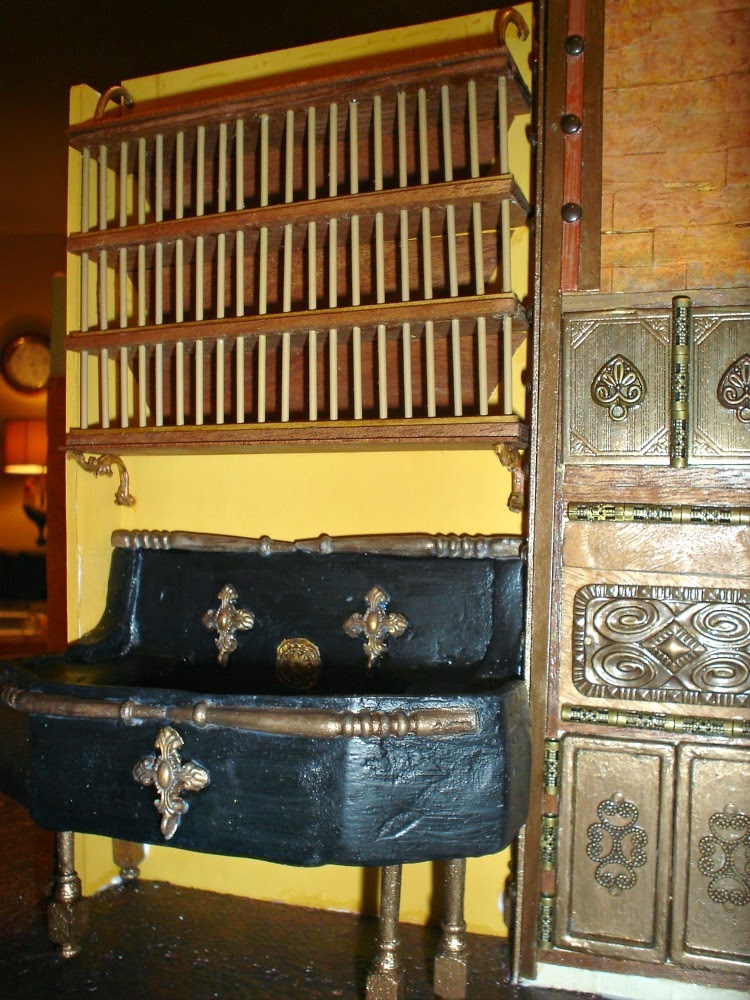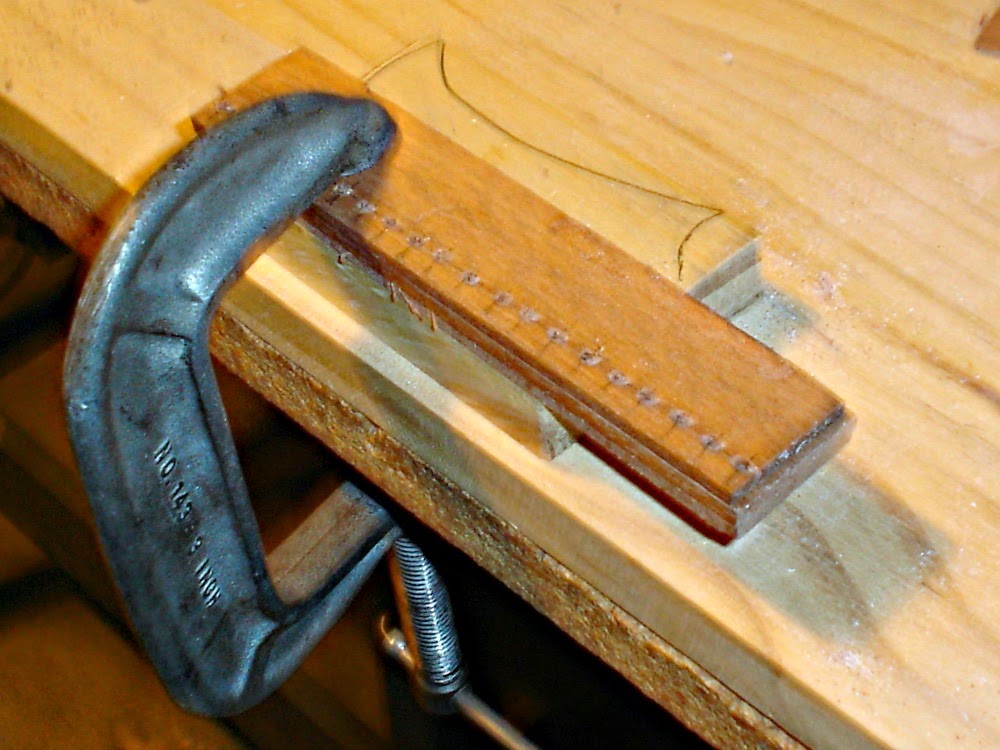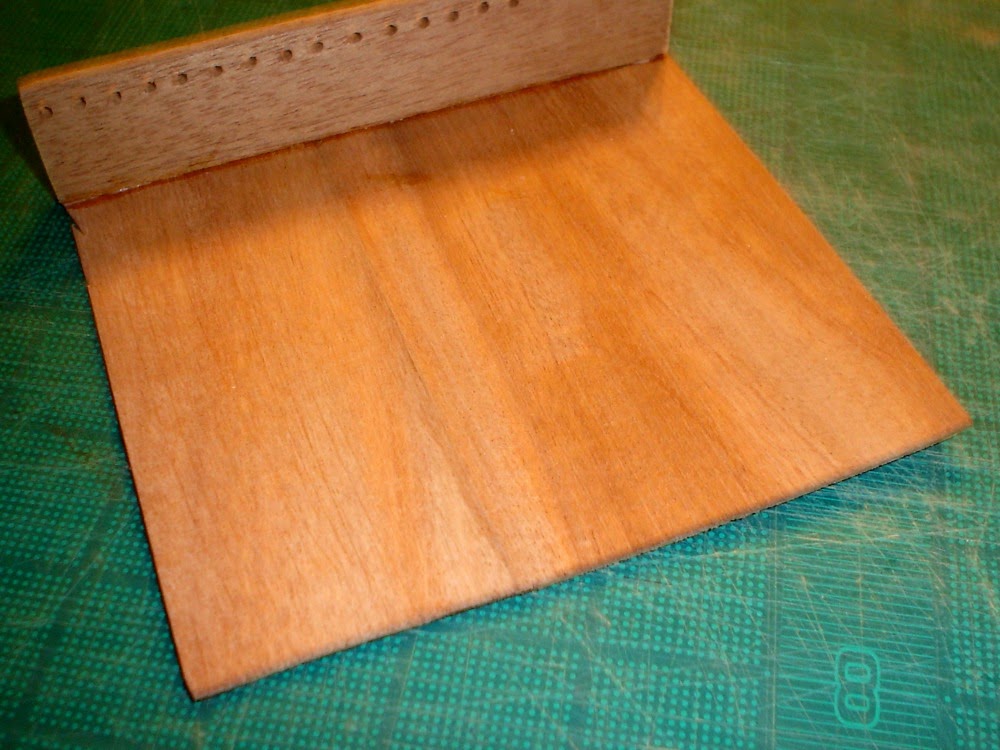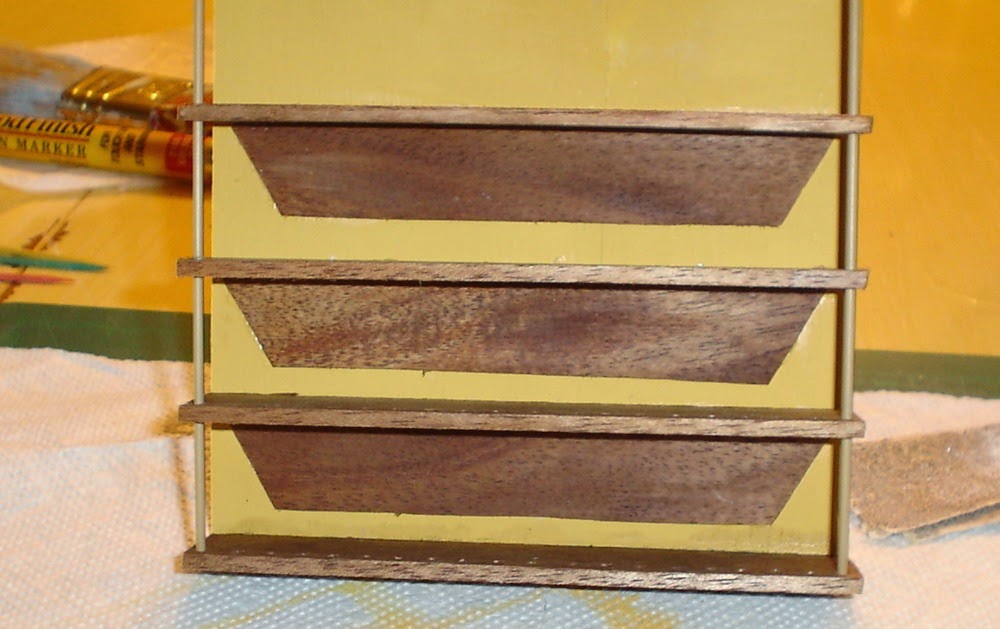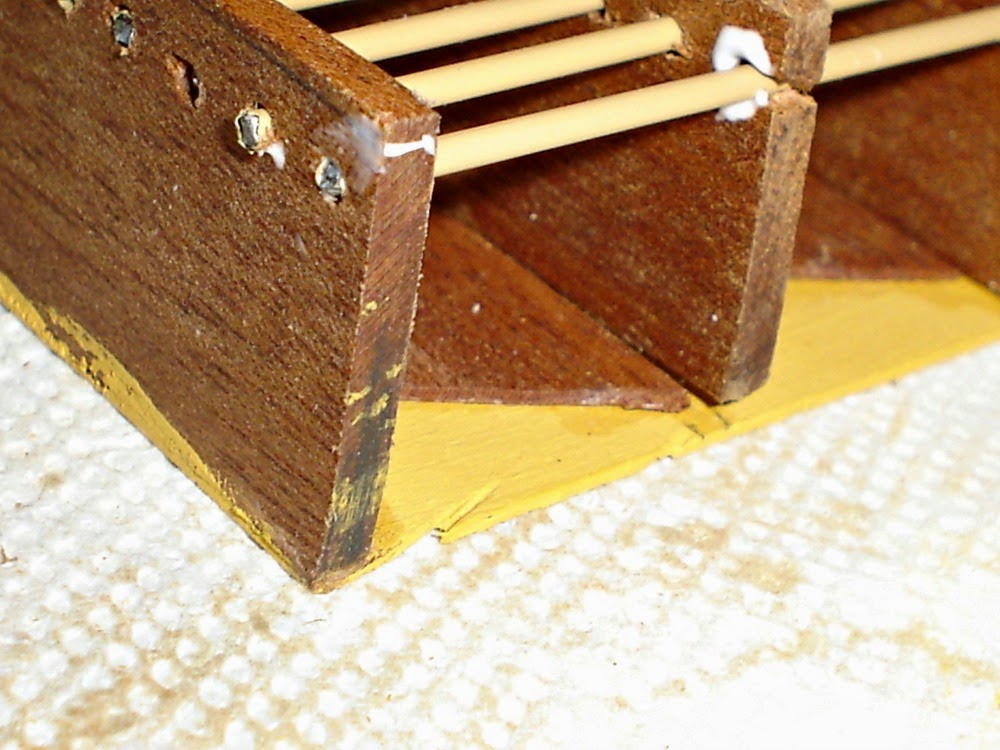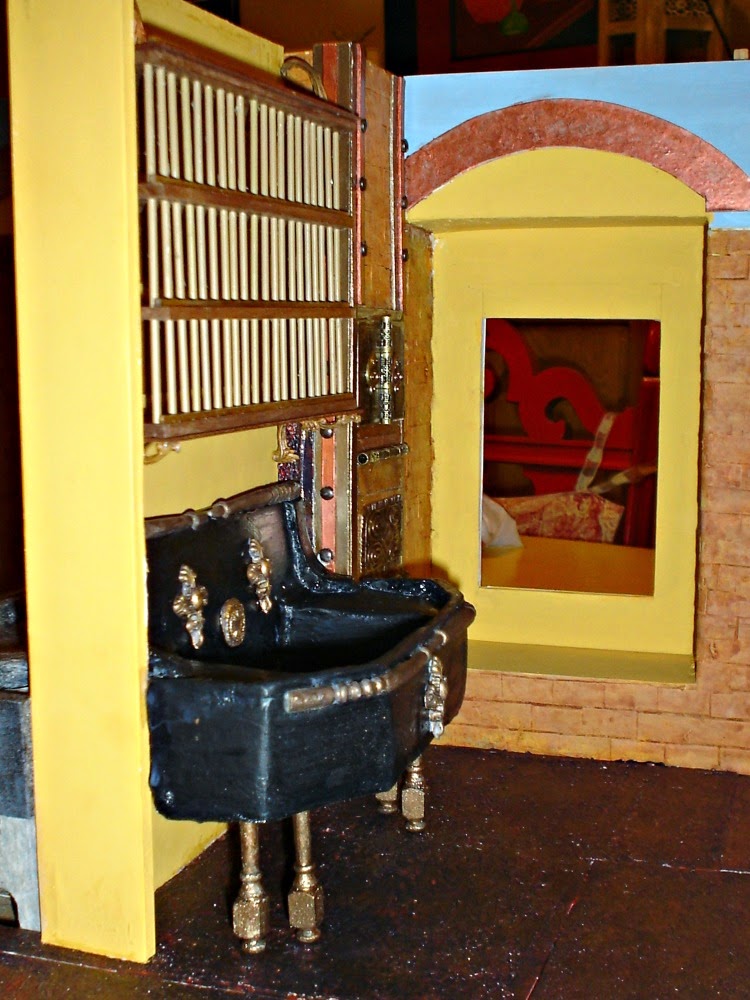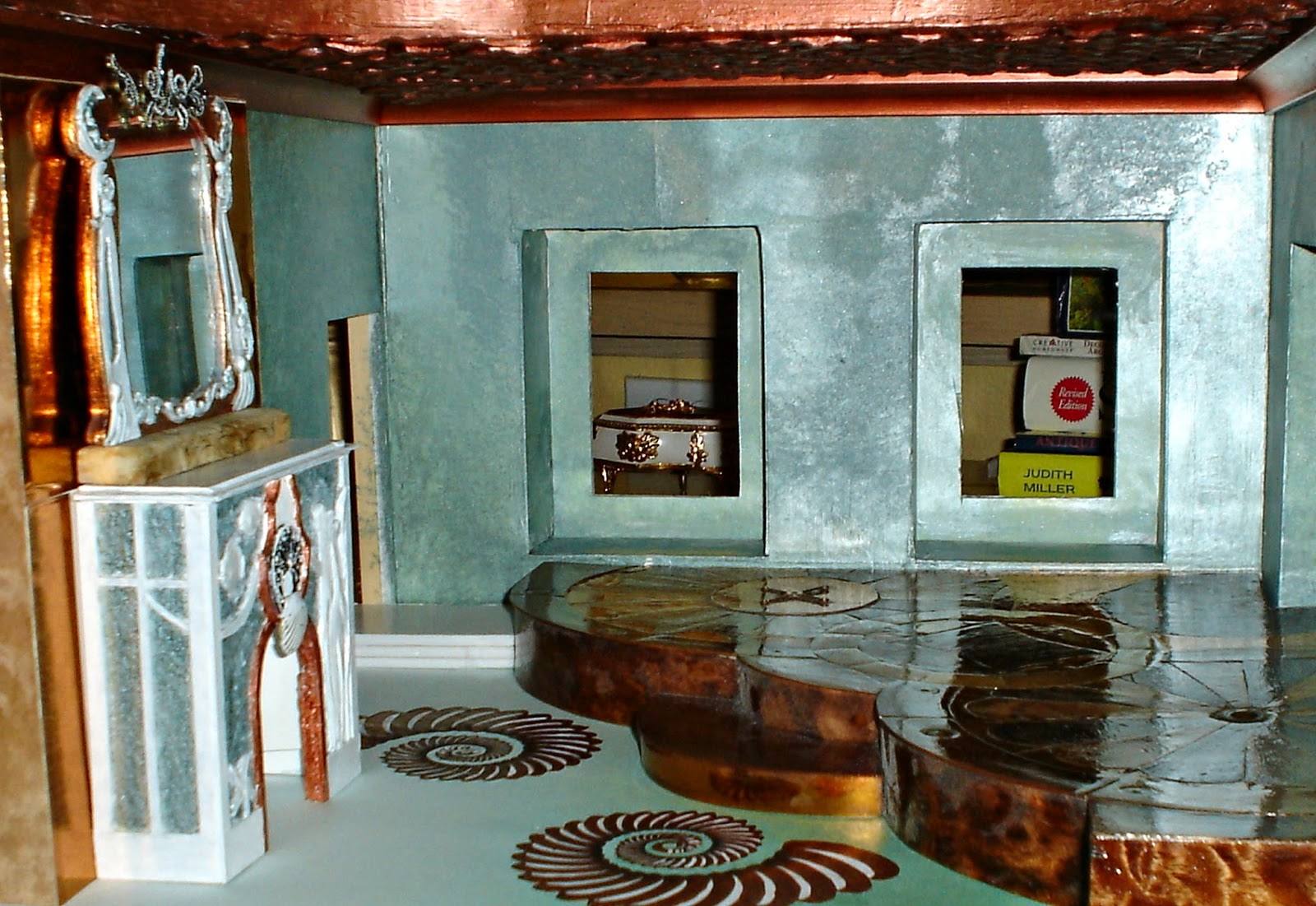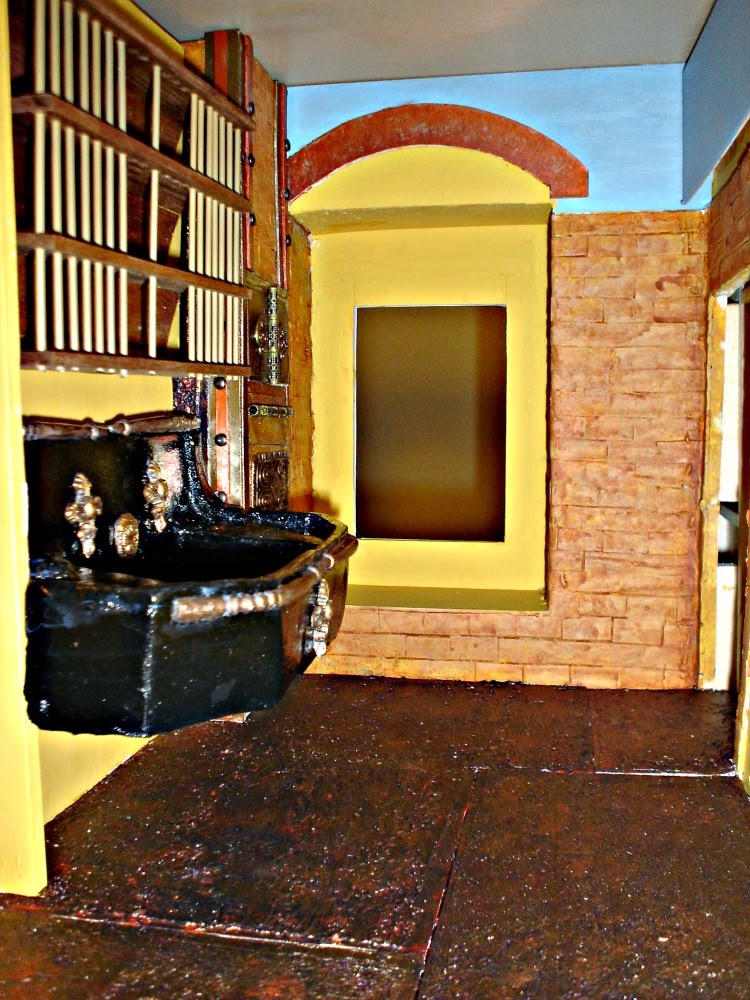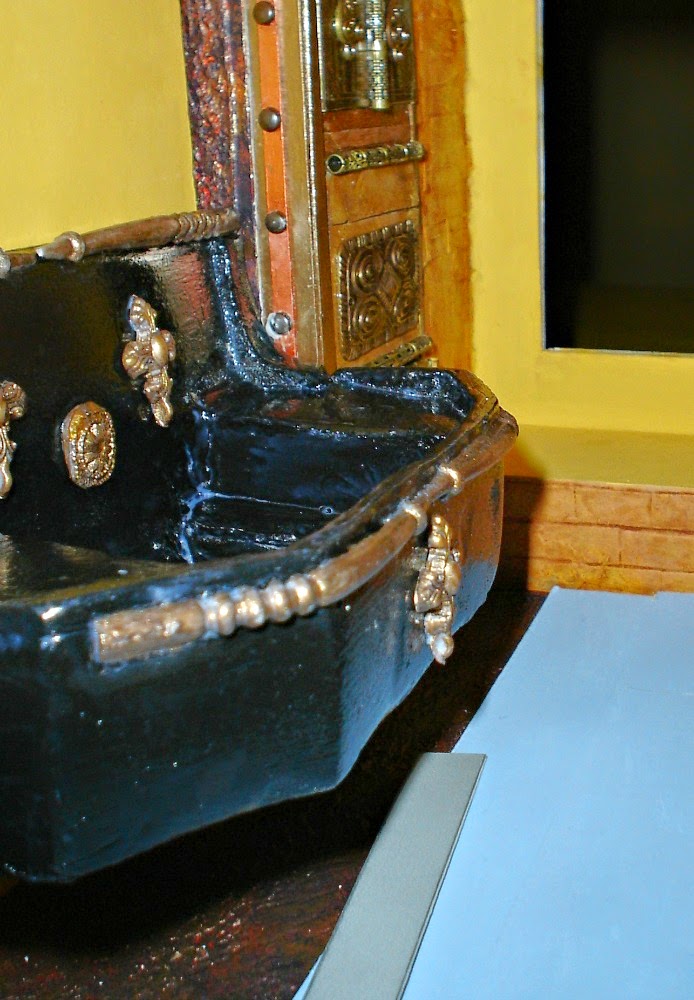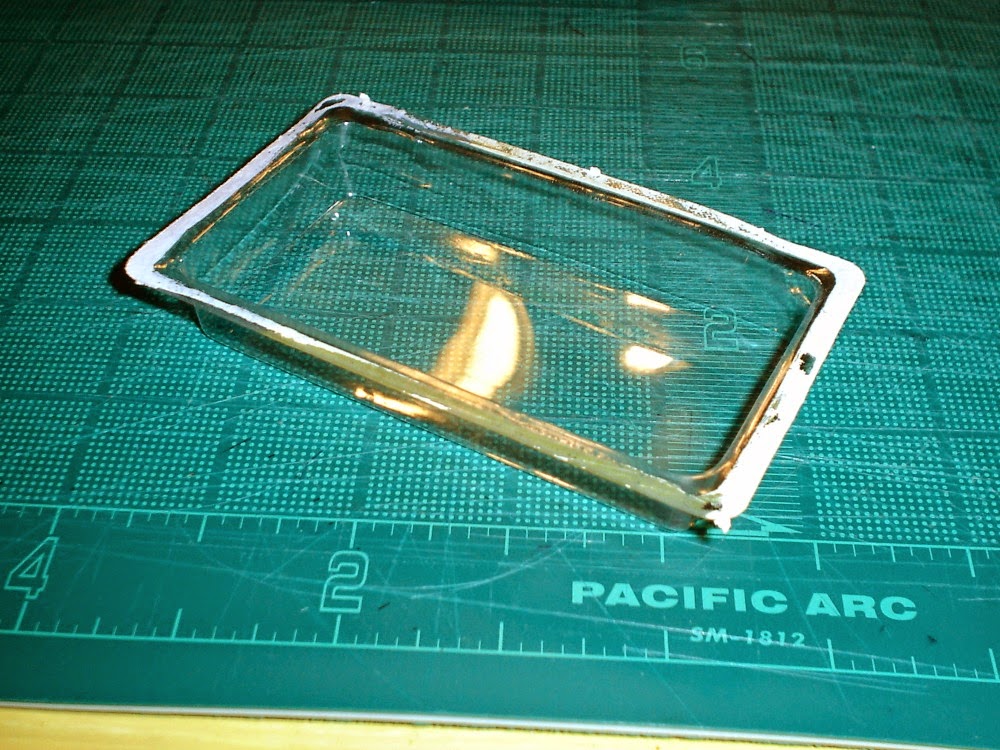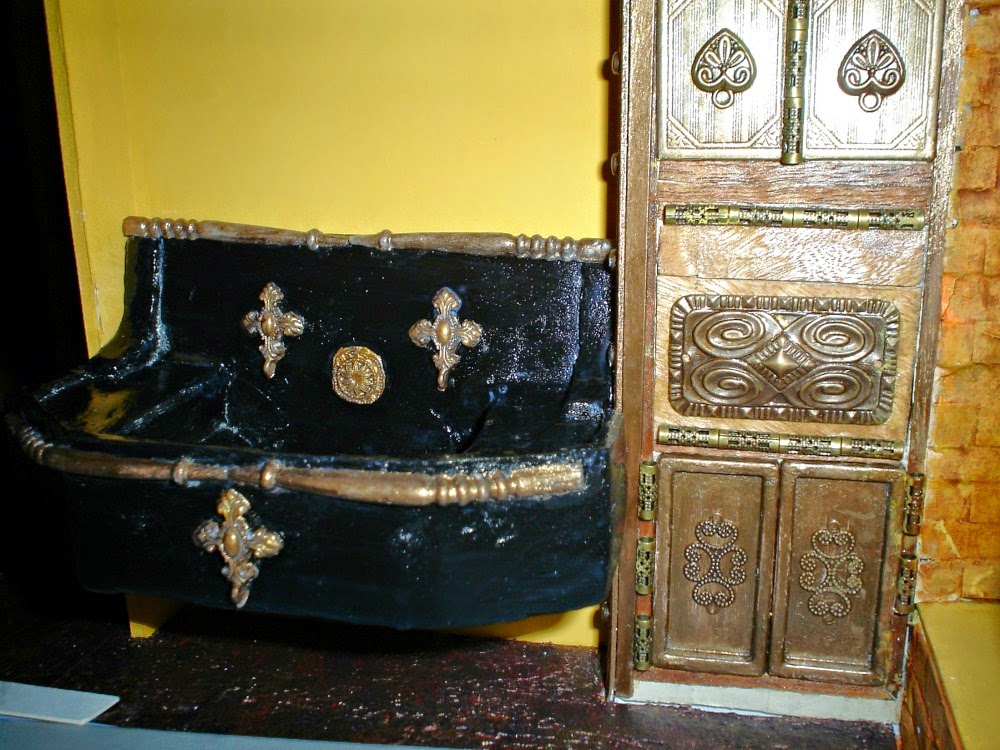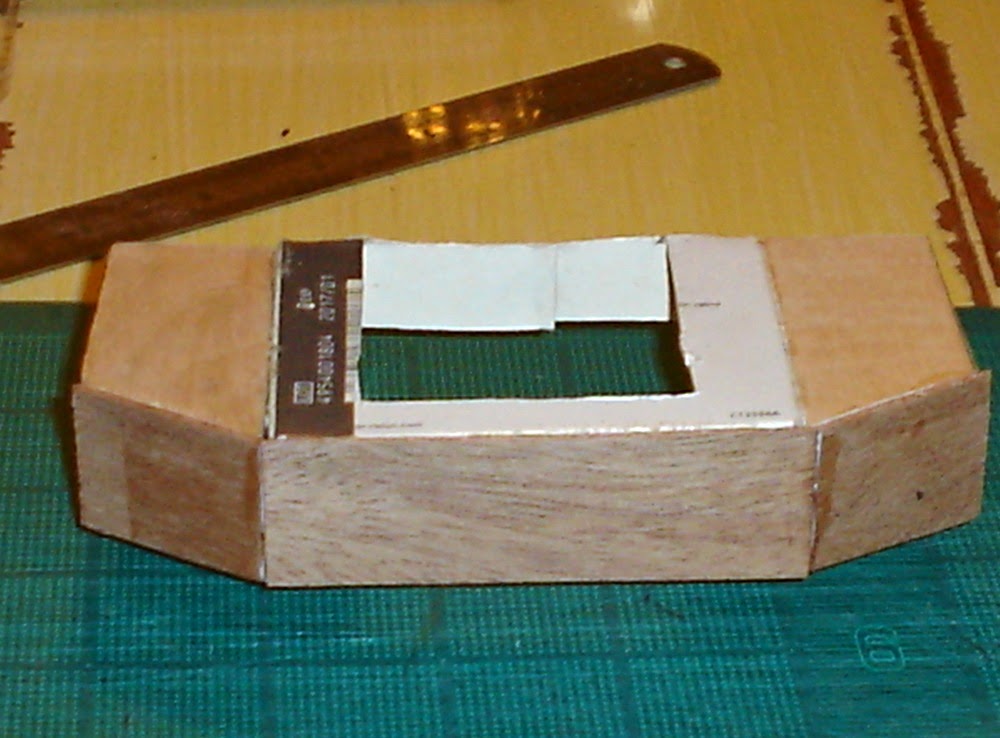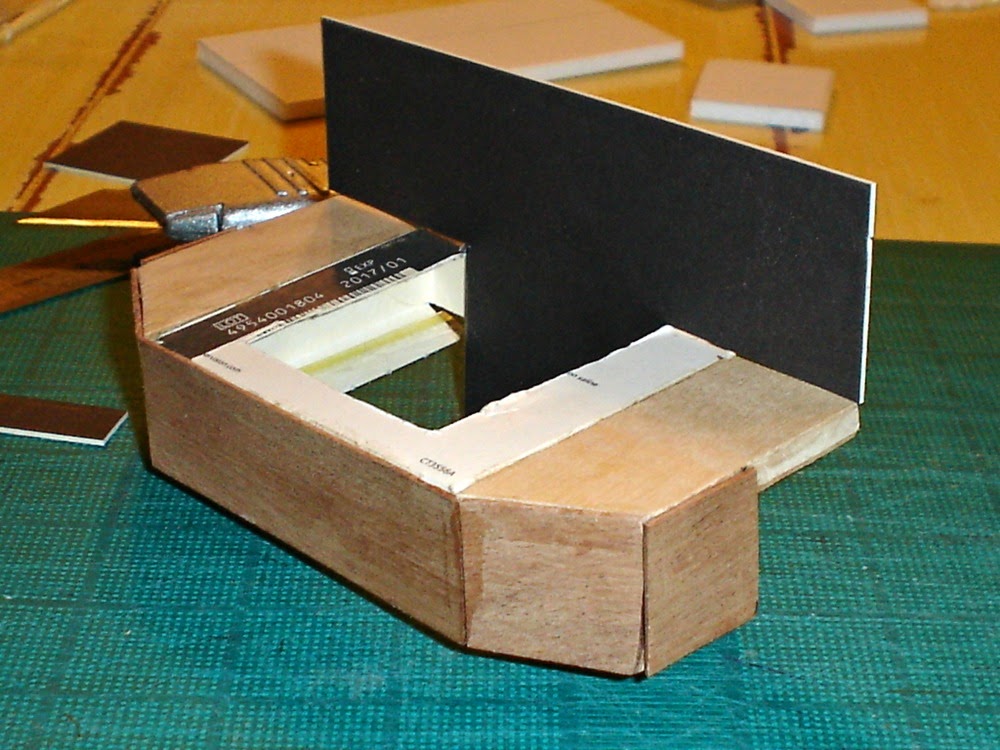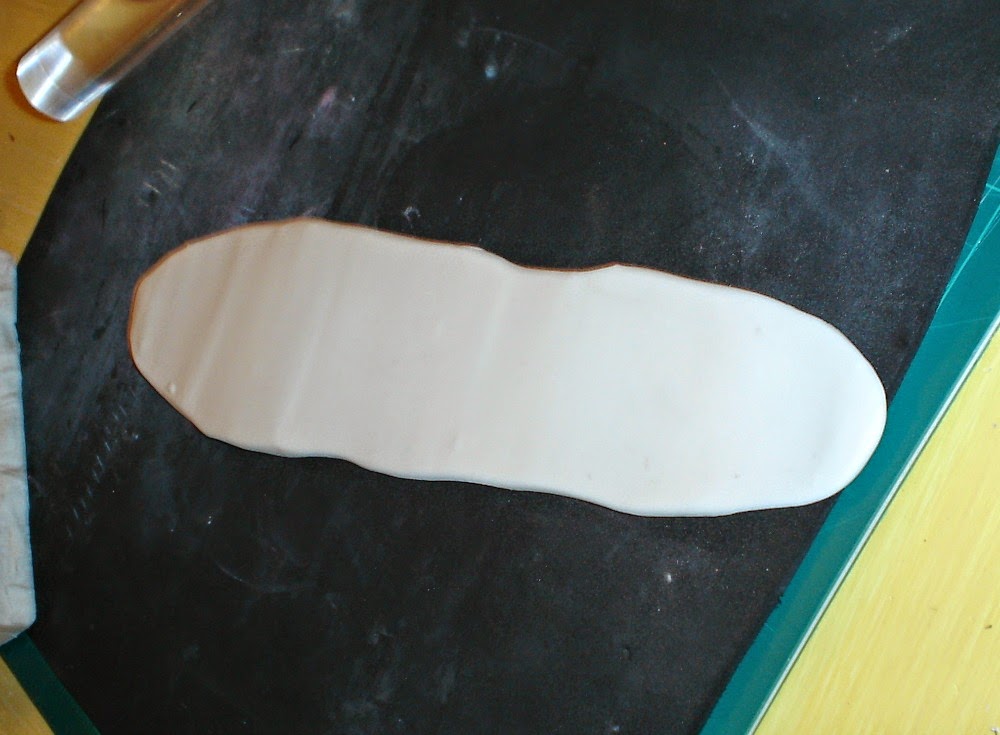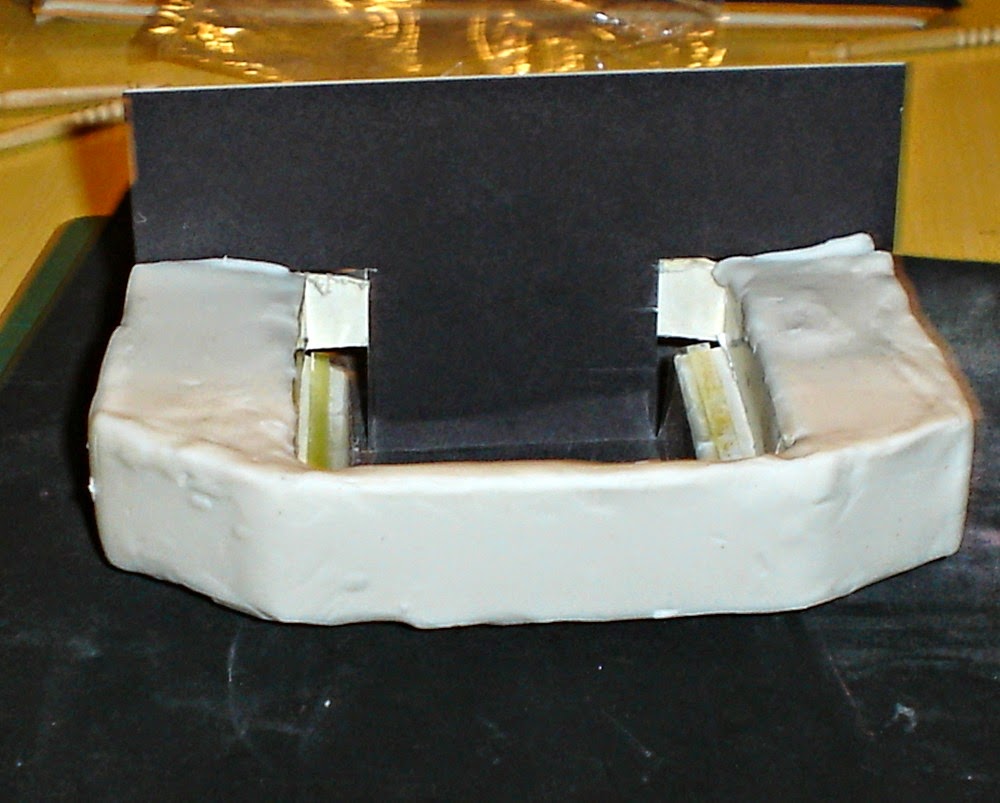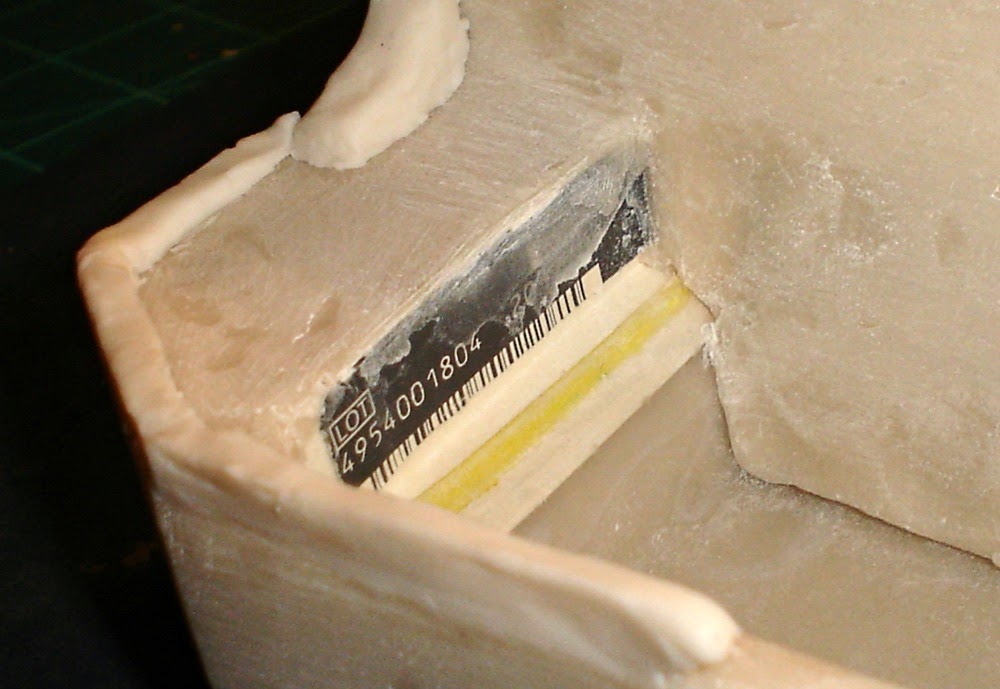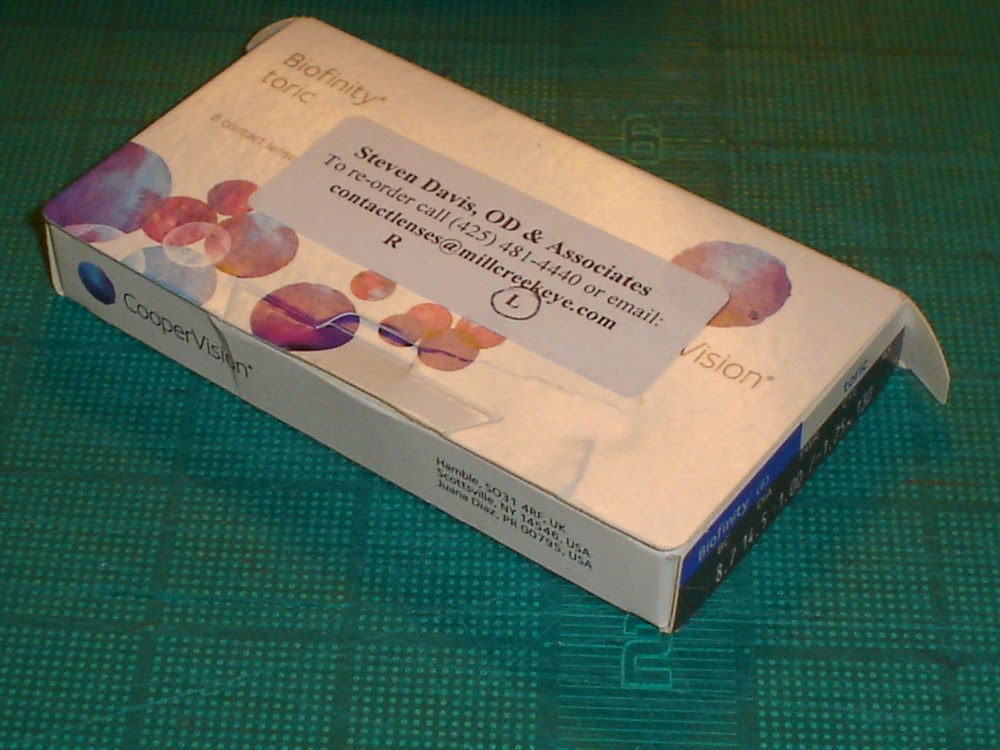Hi there folks!
As promised, I am here to drag you through the creation of my latest addition to the Steam-punk kitchens! I had a lot of fun with this little project. It was a fairly simple project, one that I think just about anyone could build with a little patience.
A Little Aside
First, the obligatory photo of the Butler's Pantry as it stands now. The Iron Sink now has six new legs (Newel Posts turned upside down!), and a new matte finish. Almost done now. Just needs a faucet set and it will be complete. The faucet set will likely sneak in unnoticed sometime in the near future!
A Little Bit O' History
Before I get into the making of the miniature plate rack, I would like to share just a bit of history I find interesting about the Butler's Pantry. We have a modern day view of the Butler's role, and of the Bulter's Pantry as a sort of staging area for the dining room. But the history of the Butler's Pantry is a continual merging and separating of the roles of various rooms and domestic service jobs that was shaped by social and economic history.
The Butler, by the Victorian Age, was both a butler and chief server. The Butler's Pantry functioned in many capacities, combining the functions of many of it's predecessors, primary among them the Butt'ry, the early storeroom for casks and bottles of wine, and the Sewery, or Servery, which was historically used as the primary staging area for serving the dining rooms, and was the repository for fine plate, silverware and valuable service-ware.
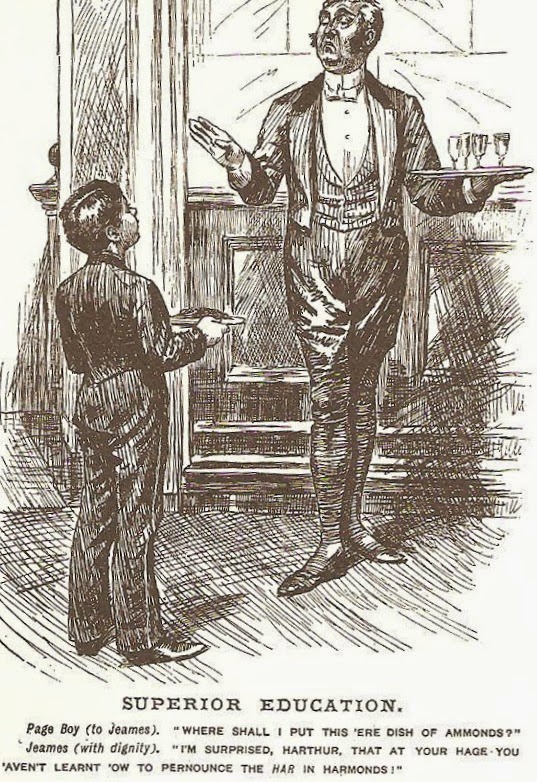 |
| Courtesy of The Queen's Scullery (SJ Alexander et al.) / CC BY-NC-ND 3.0 |
In the grander homes, the butler may have actually slept in the Butler's Pantry, as a deterrent to servants "of base character" stealing the valuable dinnerware of the grand home. The Butler's Pantry of the Victorian age functioned then as an office of sorts, from which the Butler ran his household, managing the log books for wines, servicing the fine plate and the fine personages of the house. From this room, he staged fine dinner parties and managed, in wealthier homes, a large staff of servants.
 |
| Photo Courtesy of "Cooking with Glitter" Under Creative Commons License |
Serving as a butler in a fine home was a profession, by the 19th century, that became a science. Butler's were coached and trained by their more mature predecessors, books were written about how to best serve, clean, and manage the furnishings and important tasks of the butler's service. In one book written to transfer the important skills of the butler and footmen of the Grand Manors during the early 1800's, this writer admonishes his readers . . .
"Some however, have much injured the plate intrusted to them,
by making experiments of different kinds upon it."
'The Footman's Directory and
Butler's Remembrancer', J. Hatcher and Son, London 1823
Butler's Remembrancer', J. Hatcher and Son, London 1823
The writer goes on to provide detailed instructions as to how to best to wash, clean, and refurbish the plate. That quote made me wonder what kind of experiments would "much injure" the plate?! Were they using acid? :0)
If you find the tidbits above interesting, take the time some time to read up on these domestic servants, and the history of these erstwhile important rooms of the Victorian era. It is fascinating, and in the case of the butt'ry, it's history boasts roots from ancient Egypt!
How Did He Do It?
I know you have been waiting with bated breath to find out how this plate rack, which will help our Steam-punk Butler discharge his duty admirably, was built. Some of you may be ready to expire by now. Well, wait no longer. We've finally arrived!
Step 1:
Cut and drill holes through the shelves. Mine were about 5 inches long, 1 inch deep, and 1/8 inch width. I used a 1/16 inch drill bit to drive the holes, and drilled all four shelves at once, so that the holes would align top to bottom.
Step 2:
Cut the back to fill the desired space. I used 3/32" mahogany lumber at 5 inches by 5 inches.
Step 3:
Stain or finish the shelves and the back to taste. I used a Minwax Stain Pen called Golden Oak.
Step 4:
Attach the bottom shelf with Glue. I used Arlene's Tacky Glue. Use a toothpick to remove any excess glue.
Step 5:
Cut dowels that will intersect the holes through all four shelves. My shelves were approximately 1 inch apart, so I cut my "dowels" at about 4 3/8ths inches, to account for the width of the shelves. I used fake "blood grass" from Hobby Lobby for the dowels. The natural appearing "wood" of the stem was 1/16 inch in circumfrence, and was reinforced with a strong metal rod inside. It was perfect for the job. I used tin snips to cut the metal rod after measuring.
Step 6:
Test for a good square fit. If the fit of the shelves is not perpendicular to the rods to create a neat square, recut and redrill the shelves. This is an important step, as if you miscalculate, your dowels will not look straight once assembled.
Step 7:
Once satisfied with the fit, glue the shelves into their intended location. Cut and stain supports if desired. I cut my back supporting pieces out of 3/32" lumber, 3/4 inches deep, and mitered the corners. Alternatives to this treatment would be to place 1/16" square pieces of lumber under the shelves. They will need some sort of support, unless you know something about glues that I don't!
Step 8:
Glue in the dowels. I used Arlene's Tacky Glue and a toothpick to fill each hole and then put the dowel through all four shelves. As you can see, my method was a bit messy. I am sure someone knows of a better method! I used the toothpick to clean up the puddles of glue at each hole. It cleans up nicely with a toothpick, and as long as you have already stained the wood, is not apparent once the glue dries.
Step 9:
Stop and allow the glue to dry thoroughly. Failure to do so will cause the piece to go out of square.
Step 10:
Cut 3 additional pieces to finish off the top, bottom and backsplash of the shelf. Mine were 3/32 inch mahogany, approximately 5 inches by 1 inch. Sand and clean these well, as they are your finish layer.
Step 11:
Glue on the finish layer. Here I am applying the finish layer for the shelf backsplash which I painted to match the wall behind the shelves. Be sure to clamp or hold each finish piece until reasonably dry. These thin pieces of wood will easily warp unless clamped.
Step 12:
Add molding in the front of each shelf, butting against the front of the dowels(not pictured). Set the top piece back to be placed above the molding on the lower shelves. I used 1/16 inch by 1/16 inch lumber I purchased at Hobby Lobby for this. I also stained these molding pieces with the Minwax Golden Oak pen.
Step 13:
Prepare brackets, if you choose to use them. I cast mine out of resin, using molds I made from Amazing Mold Putty. Some of you will remember the clock my daughter had that I have used previously. I used that same clock to cast these pieces.
Step 14:
Glue the brackets onto the shelves and hang them. You are done!
Once I completed the above steps, I glued everything in, Wall, Sink and Plate Rack. Time now to move on to the next project!
Until Next Time!
Doug S
P.S. Disclaimer: I have not attempted to faithfully record exact dimensions. I would expect that each situation would be different, and would require remeasuring.
